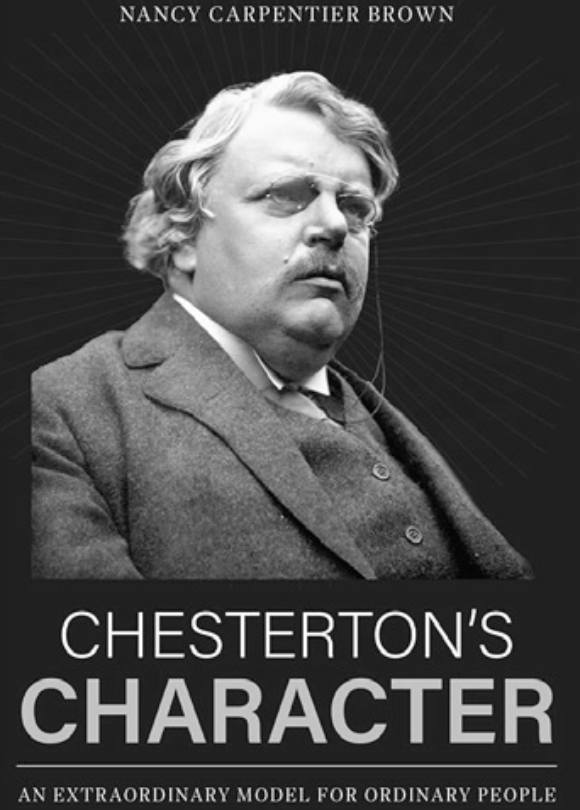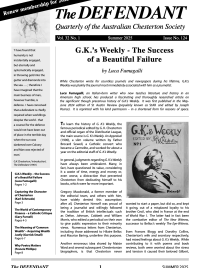What was Chesterton’s character like?
It’s a question we may think has already been answered. His voluminous writings – and the various biographical portraits of him – provide abundant evidence of his gracious and generous character and the selfless life that he lived.
But it has taken Nancy Brown to capture his character in a more focused and vivid way. In Chesterton’s Character: an extraordinary model for ordinary people (Chesterton & Brown Publishing, 2024), she brings together the various strands of Chesterton’s life to form a coherent picture of the kind of man he was.


Organising her compact book under a series of headings, she asks in each case whether Chesterton was “ordinary” – as a man, a journalist, a husband, a friend, and a Christian. She then makes clear, with the support of various stories about his life, that he was “a very ordinary person who lived quite an extraordinary life”.
She points out various ways in which Chesterton changed her life, not as a convert, but by inspiring her to be “more joyful, more hopeful, and more charitable.” His example was reinforced by that of Frances, as shown in Nancy’s biography of Gilbert Chesterton’s wife, The Woman Who Was Chesterton (2015).
Chesterton’s credibility was heightened by the fact that he lived in the secular world. As a journalist, he wrote for daily newspapers and cultural magazines. He gave lectures and engaged in debates in front of general audiences, and served as a broadcaster on the BBC.
Yet he seemed constantly to be pondering higher truths and realities. He was always thinking about God – and, in Nancy Brown’s words, “always writing about God, even when he never mentioned God.” He “was evangelizing in an extraordinary way: not preaching, not quoting Scripture, not proselytizing.” He “met people where they were, in the secular world,” telling stories and preaching truths “to an audience that loved the common sense they found in his writing.”
Perhaps T.S. Eliot’s comment about the vocation of a Christian journalist best describes the special gifts that Chesterton had as a journalist and public speaker – that he always found the topical excuse for writing about the permanent.
In a final chapter, Nancy Brown nicely summarises Chesterton’s virtues. First, and outstandingly, he excelled in charity, which he himself defined as “a kind and reverent handling of the actions of sinners, an allowance for their temptations, an unconquerable hope for their souls.”
Chesterton lived out his definition of charity, not only in his close friendships and dealings with ordinary people, but in being incapable of making enemies. His intellectual clashes with public figures like George Bernard Shaw and H.G. Wells did not become personal. He did not allow disagreements to turn into quarrels.
How extraordinary it was that he combined charity for others with profound intellectual integrity and courage. He did not practise charity by surrendering or sacrificing truth.
He wrote biographies of Thomas Aquinas and Francis of Assisi, and cherished a devotion to both saints. On Chesterton’s death in 1936, Ronald Knox poetically pictured each saint beseeching God to welcome him into paradise:
Take him, said Thomas, for he served the truth;
Take him, said Francis, for he loved the poor.
Chesterton’s Character is a small book that fills a large gap. It fully demonstrates that Chesterton continues to be, in the words of the author’s sub-title, “an extraordinary model for ordinary people.”
